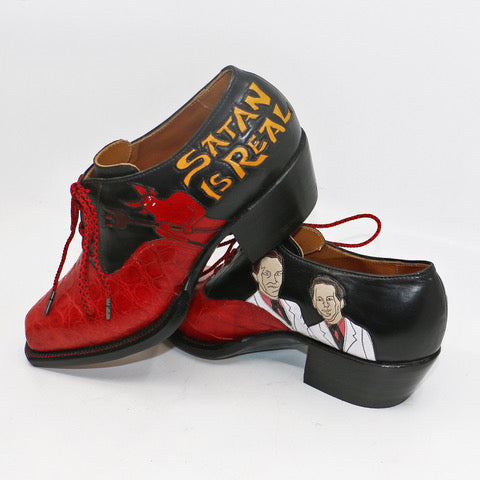OK not to get all mushy on you all, but we have the coolest customers and fans ever. Really. We're constantly getting emails and photos showcasing how you all are using our shoelaces to do something outside-the-box, expressing yourselves, and just getting weird with it! That's exactly why we started this little shoestring company in the first place, so it truly makes it all worth it when we see and hear your stories.
Recently, one story in particular got us super excited, and we wanted to share it with you all. Meet Lisa Sorrell, a bespoke boot maker out of Guthrie, Oklahoma. Lisa makes handmade, leather cowboy boots and cowboy boot shoes (more on that below), and each boot and shoe is its own work of art. She is a true artist and craftswoman in her space. She reached out recently to show off how she's using Whiskers Laces as the final touch to her new cowboy boot shoe pieces (see images below). Instantly, we knew we had to meet her and learn more. Enjoy our convo and her story below, as well as the amazing pieces of shoe art that she's decided to adorn with our laces! Whiskers on, Lisa!
Whiskers: We're such a fan of your work and just getting weird/funky/creative with shoes in general. How long does it take to make a pair of your bespoke shoes?
Lisa Sorrell: It takes two to three weeks of working time to make a pair of shoes; however, a few years ago I started a separate business that sells leather, tools, and supplies to bespoke boot and shoe makers like myself. This means that I’m not free to work full-time in my leather studio anymore. Also, as with any bespoke boot or shoe maker, I have a waiting list of clients/orders. It may take me two to three months to do the two to three weeks worth of work required to create a pair of shoes, and my waiting time is typically around 18 months.

Whiskers: That's no surprise, given the detail and craftsmanship you can see in each pair of shoes you create. How long have you been making shoes?
Lisa: I’ve been a cowboy boot maker for over 25 years now, but I’ve only been making shoes for around three years. During World War Two, leather was scarce and expensive and cowboy boots were in demand, so boot makers began making them shorter to save leather. Really short boots are called PeeWees, and they became popular during this period. One boot company, Olsen Stelzer, took this even farther and began making dress shoes on a cowboy boot last, with pointier cowboy boot toes and higher cowboy boot heels. I took my inspiration from those vintage shoes and even designed a new last model specifically for the shoes that I make.

Fender Tweed Fabric Shoes for a musician and DJ
Whiskers: That is so interesting – what a creative way to adapt to a material shortage. Where do you get your inspiration from?
Lisa: I have always loved and been inspired by vintage cowboy boots, specifically the cowboy boots from the 1940s. When I make cowboy boots I often recreate or tweak vintage designs. Once I began making shoes I continued that theme of looking to vintage boots for design inspiration.




